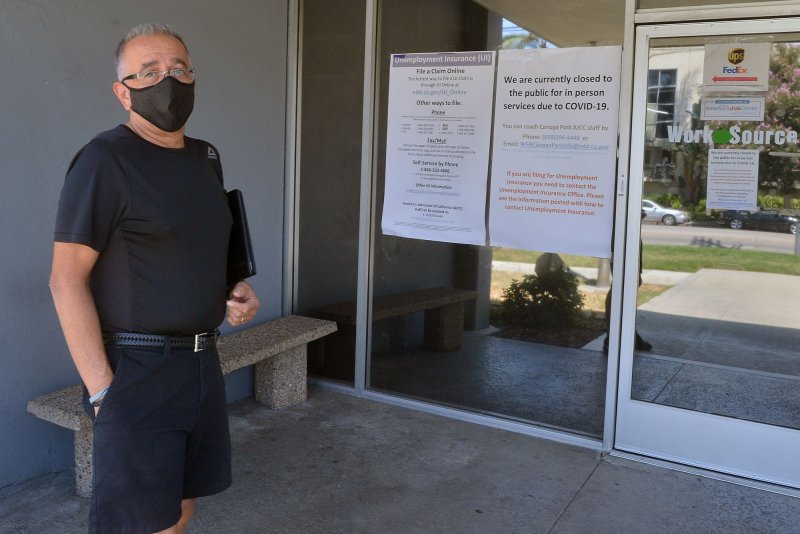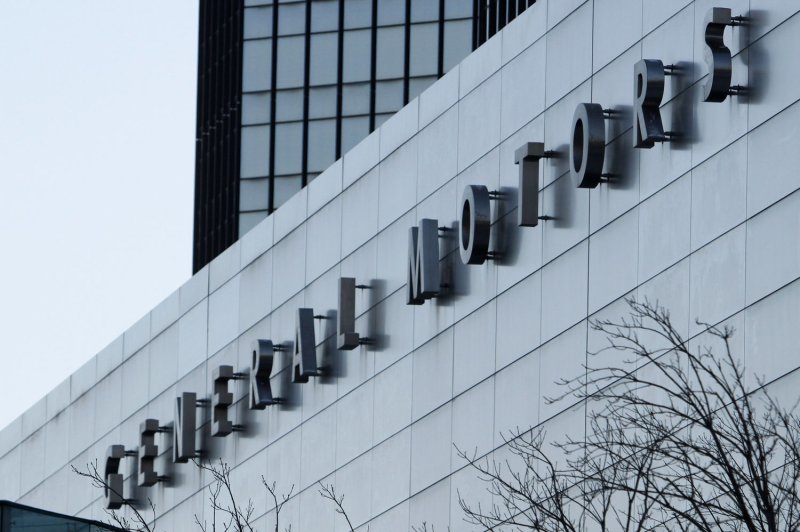'Apocalyptic': Out-of-control fire consumes B.C. town, First Nation reserve amid record heat
Adrian Humphreys
An out-of-control fire that continues to rage after consuming almost the entirety of a small town and a First Nations reserve in British Columbia spread so quickly and fiercely that people scrambled to escape with just the clothes they were wearing.

© Provided by National Post Flames rise from a burning building along a street during a wildfire in Lytton, on June 30 in this still image obtained from a social media video.
And it is not certain everyone made it out alive, officials said.
By late Thursday, 24 hours after the first alarm, residents of the Village of Lytton and a reserve of the Lytton First Nation in the B.C. interior were still searching for neighbours and relatives, taking stock of what they had lost and searching for answers on what brought such devastation in so little time.
Mike Farnworth, B.C.’s public safety minister, said most homes and buildings in the town of Lytton have been destroyed by a fire that forced the evacuation of nearly 1,000 people, including the RCMP detachment and ambulance station.
Several residents remain unaccounted for, he said.
“The town has sustained structural damage and 90 per cent of the village is burned, including the centre of town,” said Brad Vis, MP for Mission-Matsqui-Fraser Canyon, in a Facebook message. Nearby electrical, cellphone, rail and highway infrastructure were also damaged, making travel and communication difficult.
Photos show one of the town’s main intersections almost devoid of buildings, just littered with burnt debris and gutted vehicles where a village core once stood.
And it is not certain everyone made it out alive, officials said.
By late Thursday, 24 hours after the first alarm, residents of the Village of Lytton and a reserve of the Lytton First Nation in the B.C. interior were still searching for neighbours and relatives, taking stock of what they had lost and searching for answers on what brought such devastation in so little time.
Mike Farnworth, B.C.’s public safety minister, said most homes and buildings in the town of Lytton have been destroyed by a fire that forced the evacuation of nearly 1,000 people, including the RCMP detachment and ambulance station.
Several residents remain unaccounted for, he said.
“The town has sustained structural damage and 90 per cent of the village is burned, including the centre of town,” said Brad Vis, MP for Mission-Matsqui-Fraser Canyon, in a Facebook message. Nearby electrical, cellphone, rail and highway infrastructure were also damaged, making travel and communication difficult.
Photos show one of the town’s main intersections almost devoid of buildings, just littered with burnt debris and gutted vehicles where a village core once stood.

© Darryl Dyck / The Canadian Press Structures destroyed by the wildfire are seen in Lytton on July 1, 2021.
“I’m very worried,” said Rosanna Stamberg, whose son and daughter, Alfred and Marjorie Nelson, live eight kilometres from the centre of town.
“I don’t know which direction they went. I don’t know if they went down towards Chilliwack. I don’t know if they went to Lillooet. I don’t know if they went to Spencer’s Bridge or Merritt or Kamloops. I have no idea,” she said.
“Or if they stayed home.”
John Haugen, a deputy chief with the Lytton First Nation, said there is “devastation and loss” on reserve land and officials are still trying to account for all its members.
Lytton is 150 kilometres northeast of Vancouver as the crow flies, but a winding, rugged 310-kilometre drive by car.
“I’m very worried,” said Rosanna Stamberg, whose son and daughter, Alfred and Marjorie Nelson, live eight kilometres from the centre of town.
“I don’t know which direction they went. I don’t know if they went down towards Chilliwack. I don’t know if they went to Lillooet. I don’t know if they went to Spencer’s Bridge or Merritt or Kamloops. I have no idea,” she said.
“Or if they stayed home.”
John Haugen, a deputy chief with the Lytton First Nation, said there is “devastation and loss” on reserve land and officials are still trying to account for all its members.
Lytton is 150 kilometres northeast of Vancouver as the crow flies, but a winding, rugged 310-kilometre drive by car.
An Oregon town's daunting challenge: How to rebuild when wildfires left almost nothing behind
An evacuation order was issued Wednesday at 6 p.m., a day after the village posted a Canadian record temperature of 49.6 C as a heat wave gripped the province.
The heat may have already had a devastating impact across much of British Columbia, with elderly and other vulnerable residents appearing to have been hit hardest.
British Columbia’s Coroners Service had received reports of 486 sudden and unexpected deaths between June 25 and Wednesday afternoon, Chief Coroner Lisa Lapointe said, well over double the usual number.
At the time of the fire, Lytton had set records for high temperatures for three days in a row — surpassing the highest temperature ever recorded in Las Vegas.
Lytton Mayor Jan Polderman said the fire spread so swiftly that within 15 minutes people had to run, leaving behind belongings and pets.

© Jennifer Gauthier / Reuters A view shows a wildfire burning in the mountainous area outside the town of Lytton.
Scott Hildebrand, chief administrative officer of the Thompson-Nicola Regional District, said billows of smoke filled the air and buildings started to erupt in flames within minutes.
Many residents fleeing the town set out for Lillooet or Merritt, where emergency shelters were set up and hotels were asked to find space for evacuees.
Photos and videos posted on social media revealed the dramatic and horrifying scenes, both from afar and terrifyingly close.
An aerial photo shows the widening plume of smoke, starting white and narrow above the tree line, then widening into a panorama of grey haze across the horizon.
Photos from a small convoy of vehicles leaving the area showed two separate fires, with white smoke from a wildfire that has been burning for two weeks on the mountainside above town, and a second plume, darker and denser, in the valley, consuming the town itself.
A dramatic video posted on Vimeo shows a harrowing escape along a curving road, racing past burnt and burning buildings, cars, trucks, RVs and tall trees as the vehicle is repeatedly buffeted by blowing smoke and ash, that sometimes came so thick that visibility was reduced to almost nothing.
Scott Hildebrand, chief administrative officer of the Thompson-Nicola Regional District, said billows of smoke filled the air and buildings started to erupt in flames within minutes.
Many residents fleeing the town set out for Lillooet or Merritt, where emergency shelters were set up and hotels were asked to find space for evacuees.
Photos and videos posted on social media revealed the dramatic and horrifying scenes, both from afar and terrifyingly close.
An aerial photo shows the widening plume of smoke, starting white and narrow above the tree line, then widening into a panorama of grey haze across the horizon.
Photos from a small convoy of vehicles leaving the area showed two separate fires, with white smoke from a wildfire that has been burning for two weeks on the mountainside above town, and a second plume, darker and denser, in the valley, consuming the town itself.
A dramatic video posted on Vimeo shows a harrowing escape along a curving road, racing past burnt and burning buildings, cars, trucks, RVs and tall trees as the vehicle is repeatedly buffeted by blowing smoke and ash, that sometimes came so thick that visibility was reduced to almost nothing.

© Jennifer Gauthier / Reuters Martha Van Dyke of Lytton was fortunate to rescue her cats, Tigger, and Kona (in the cage).
“I am incredibly overwhelmed by the news of the fire. It happened so fast and is completely devastating almost everyone I’ve ever known,” Shianna McAllister, a Nlaka’pamux from the Lytton First Nation, said on Twitter. She said several residents chose to stay to try to protect their houses.
“The town itself and surrounding reserves have been severely hit. Fire continues up towards other surrounding reserves between Lytton and Lillooet and Lytton and Shackan,” she said.
Lytton has a “quirky tourist draw,” McAllister said: it is one of the few places where the Canadian National Railway and Canadian Pacific Railway lines cross, leaving Lytton nestled between the two railways.
While rail buffs find that intriguing, it brings danger to the community, including regular fires set by sparks from the metal wheels of passing trains grinding on metal rail lines lighting dry areas of brush along the tracks, McAllister said.
“Many people in the community expressed concerns that the railways were still up to their usual traffic when the temperatures in Lytton were reaching the high 40s (Celsius) this week,” she said.
“I am incredibly overwhelmed by the news of the fire. It happened so fast and is completely devastating almost everyone I’ve ever known,” Shianna McAllister, a Nlaka’pamux from the Lytton First Nation, said on Twitter. She said several residents chose to stay to try to protect their houses.
“The town itself and surrounding reserves have been severely hit. Fire continues up towards other surrounding reserves between Lytton and Lillooet and Lytton and Shackan,” she said.
Lytton has a “quirky tourist draw,” McAllister said: it is one of the few places where the Canadian National Railway and Canadian Pacific Railway lines cross, leaving Lytton nestled between the two railways.
While rail buffs find that intriguing, it brings danger to the community, including regular fires set by sparks from the metal wheels of passing trains grinding on metal rail lines lighting dry areas of brush along the tracks, McAllister said.
“Many people in the community expressed concerns that the railways were still up to their usual traffic when the temperatures in Lytton were reaching the high 40s (Celsius) this week,” she said.

© Karin Schmidlin via Reuters The Lytton wildfire as seen from an airplane.
There is no cause for the fire announced, or confirmation if the Lytton fire is separate from the wildfires around it. Meteorologists said the unusual weather contributed to thousands of lightning strikes in the B.C. interior. The tremendous, unrelenting heat seems a likely reason why it spread quickly.
Jo-Anne Beharrell said the heatwave made the area “very dry, very dusty.”
“I’m telling you, it was like being in the desert.”
When she drove into town to check on friends and neighbours there was smoke hanging over the area, she said.
“It definitely feels apocalyptic.”
Edith Loring-Kuhanga, an administrator at the Stein Valley Nlakapamux School, says she and fellow staff members were forced to end a Zoom interview with a prospective teacher as fire burned down their block.
“This is so devastating — we are all in shock,” she wrote in a Facebook post. “Our community members have lost everything. I understand our Band office is also gone.”
Jean McKay said she smelled smoke at her home about 15 km from Lytton, a sign for her that it was time to leave.
“I was still sitting there and wondering what to pack — emotionally walking out my door but thinking, ‘I’m leaving all this behind,’ it’s hard, very hard — when my girlfriend told me her house was burning, it really hit home,” McKay said.
“My daughter phoned before we lost services and stuff, she’s telling us, ‘Get out of there, get out of there.’”
For McKay and her daughter, Deirdre, 22, leaving home was hard.
“I cried. My daughter cried. She said, ‘I don’t even know why I grabbed my key. We might not even have a home.’”
Before leaving, her daughter grabbed a photo of her grandfather off the wall to hang on to, McKay said.
“As long as we’re together we’ll survive,” McKay said. “I just pray that our houses are OK.”
The BC Wildfire Service said the blaze is raging out of control over an area spanning roughly 80 square kilometres.
To help the victims of Lytton, a GoFundMe campaign has been set up .
With additional reporting by Vancouver Sun, Canadian Press, Reuters
• Email: ahumphreys@postmedia.com | Twitter: AD_Humphreys
There is no cause for the fire announced, or confirmation if the Lytton fire is separate from the wildfires around it. Meteorologists said the unusual weather contributed to thousands of lightning strikes in the B.C. interior. The tremendous, unrelenting heat seems a likely reason why it spread quickly.
Jo-Anne Beharrell said the heatwave made the area “very dry, very dusty.”
“I’m telling you, it was like being in the desert.”
When she drove into town to check on friends and neighbours there was smoke hanging over the area, she said.
“It definitely feels apocalyptic.”
Edith Loring-Kuhanga, an administrator at the Stein Valley Nlakapamux School, says she and fellow staff members were forced to end a Zoom interview with a prospective teacher as fire burned down their block.
“This is so devastating — we are all in shock,” she wrote in a Facebook post. “Our community members have lost everything. I understand our Band office is also gone.”
Jean McKay said she smelled smoke at her home about 15 km from Lytton, a sign for her that it was time to leave.
“I was still sitting there and wondering what to pack — emotionally walking out my door but thinking, ‘I’m leaving all this behind,’ it’s hard, very hard — when my girlfriend told me her house was burning, it really hit home,” McKay said.
“My daughter phoned before we lost services and stuff, she’s telling us, ‘Get out of there, get out of there.’”
For McKay and her daughter, Deirdre, 22, leaving home was hard.
“I cried. My daughter cried. She said, ‘I don’t even know why I grabbed my key. We might not even have a home.’”
Before leaving, her daughter grabbed a photo of her grandfather off the wall to hang on to, McKay said.
“As long as we’re together we’ll survive,” McKay said. “I just pray that our houses are OK.”
The BC Wildfire Service said the blaze is raging out of control over an area spanning roughly 80 square kilometres.
To help the victims of Lytton, a GoFundMe campaign has been set up .
With additional reporting by Vancouver Sun, Canadian Press, Reuters
• Email: ahumphreys@postmedia.com | Twitter: AD_Humphreys














